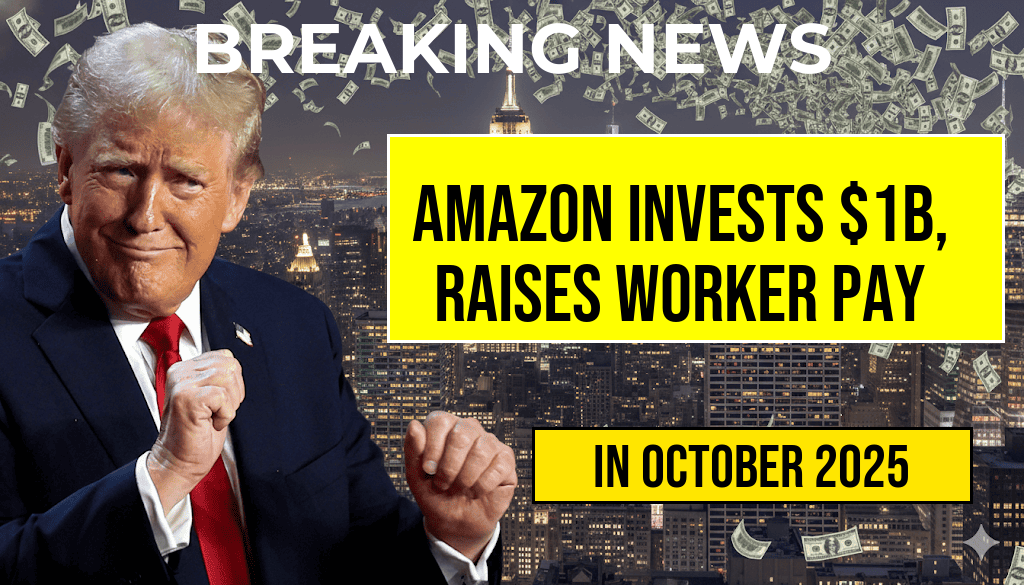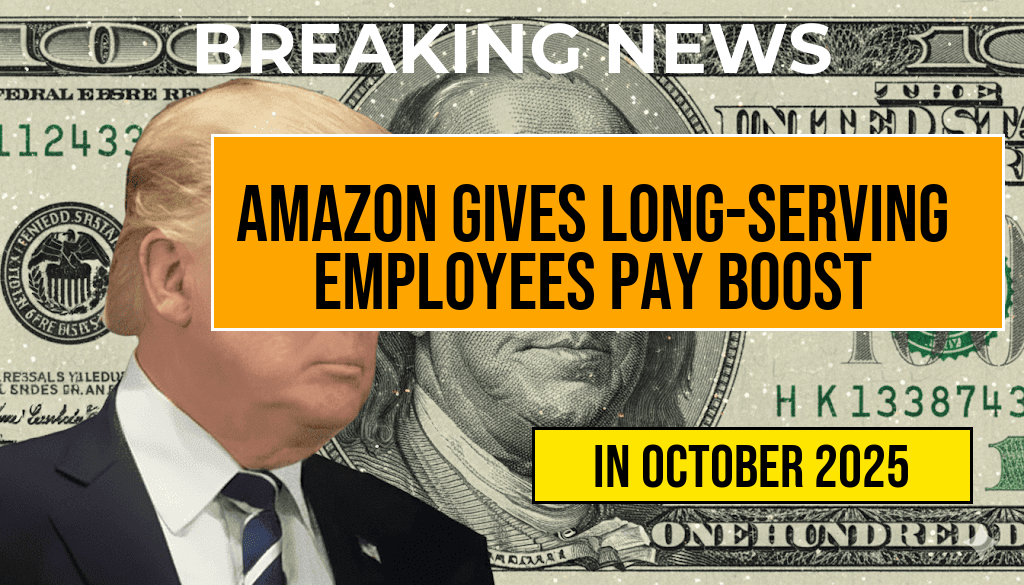Amazon has announced a significant $1 billion investment aimed at increasing wages for its fulfillment workers across the United States. This substantial financial commitment has already begun to shift the pay landscape, boosting the average hourly wage for these employees to over $23 per hour. The move underscores Amazon’s ongoing efforts to address worker compensation concerns amid a competitive labor market and rising operational costs. With the new funding, Amazon aims to enhance worker satisfaction and retention, while also positioning itself as a more attractive employer within the increasingly tight U.S. logistics and retail sectors. As the company continues to expand its fulfillment network, the impact of this wage increase may ripple through the broader e-commerce industry, setting new benchmarks for worker pay and benefits.
Major Investment Targets Fulfillment Workforce Compensation
Amazon’s recent $1 billion capital infusion is part of a strategic initiative to improve wages for its fulfillment center employees. The company has identified worker compensation as a key factor in maintaining operational efficiency and reducing turnover rates, which have historically been high in the logistics sector. According to Amazon, the average pay for fulfillment workers has now surpassed $23 per hour, a notable increase from previous averages that hovered around $18 to $20 per hour in many regions.
Amazon’s CEO, Andy Jassy, emphasized the company’s commitment to its frontline workers, stating, “Investing in our employees is investing in our business. We want our fulfillment teams to feel valued and fairly compensated for their vital contributions.” This move aligns with Amazon’s broader strategy to improve worker conditions and address public criticism related to workplace safety and pay fairness.
Impact on the Labor Market and Industry Standards
The wage hike is expected to influence the broader employment landscape within the logistics and retail sectors. Several industry analysts suggest that Amazon’s increased pay may set a new standard, prompting competitors to reevaluate their compensation packages. As a result, other major players such as Walmart and FedEx are also under pressure to enhance wages to attract and retain skilled workers.
labor experts note that increased wages could lead to higher consumer prices in the long term, but they also underscore the importance of fair compensation in fostering a more stable and motivated workforce. The move by Amazon could potentially accelerate the transition toward more sustainable labor practices in the industry.
Breakdown of the Wage Increase
| Region | Previous Average Hourly Pay | New Average Hourly Pay |
|---|---|---|
| Major U.S. Fulfillment Centers | $17 – $20 | > $23 |
| Regional Distribution Centers | $16 – $19 | > $22 |
According to internal company data, the wage increase has been implemented across multiple facilities, with some regions experiencing even higher pay boosts depending on local labor market conditions. Amazon has also introduced additional benefits, including increased overtime pay and access to more comprehensive health insurance plans, aiming to improve overall compensation packages.
Employee Feedback and Company Response
Initial reactions from fulfillment workers have been largely positive, with many expressing appreciation for the wage increases. “It’s a step in the right direction,” said Maria Lopez, a warehouse associate in Ohio. “It makes me feel more valued and gives me some peace of mind about my financial stability.”
Amazon’s management has emphasized that the wage hike is part of a broader effort to improve the working environment. The company has invested in automation technology and safety protocols, aiming to reduce physical strain and enhance job satisfaction. Furthermore, Amazon plans to roll out more career development programs, providing pathways for employees to advance within the organization.
Broader Implications for Amazon and the Economy
This $1 billion investment underscores Amazon’s commitment to positioning itself as a competitive employer while balancing operational costs. The move also signals recognition of shifting worker expectations, especially in the wake of the COVID-19 pandemic, which heightened awareness around essential workers’ conditions and pay.
Economists suggest that such investments could contribute to a tightening labor market, potentially leading to further wage growth in other sectors. As Amazon continues to expand its logistics footprint and e-commerce reach, the company’s wage policies may influence industry standards, encouraging other corporations to prioritize worker compensation as a strategic priority.
For more insights on Amazon’s workforce strategies, visit Wikipedia’s page on Amazon and Forbes’ coverage on corporate wages.
Frequently Asked Questions
What is the purpose of Amazon’s one billion dollar investment?
The one billion dollar investment is aimed at increasing **compensation** for **fulfillment workers**, significantly boosting their **average pay** to over **twenty-three dollars per hour**.
How has Amazon’s investment impacted fulfillment workers’ pay?
As a result of the investment, **fulfillment workers** now earn an **average pay** of over **twenty-three dollars per hour**, representing a substantial **pay increase**.
Which areas or departments benefit from Amazon’s investment?
The **investment** primarily benefits **fulfillment centers** and **warehouse employees**, enhancing **worker compensation** and potentially improving **working conditions** in these departments.
What are the potential benefits of this pay increase for Amazon workers?
The **pay increase** can lead to **higher employee satisfaction**, improved **retention rates**, and a stronger **workforce morale**, ultimately supporting **Amazon’s operational efficiency**.
How might this investment influence Amazon’s position in the labor market?
This significant **investment** positions Amazon as a company committed to **fair wages**, potentially attracting more **skilled workers** and setting a **competitive standard** in the **retail and logistics industry**.







